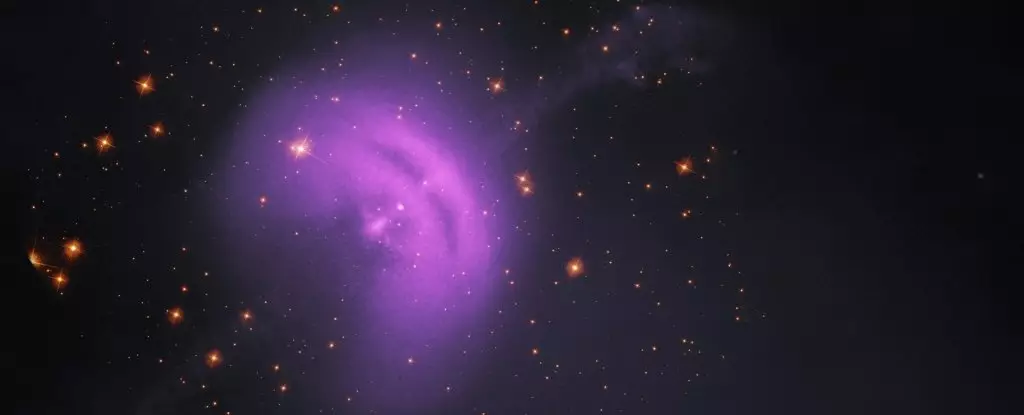The universe is a vast, enigmatic phenomenon, constantly bombarding our planet with various energetic particles known as cosmic rays. Among them, cosmic ray electrons (CRe) and positrons have emerged as subjects of significant scientific intrigue. Recent research conducted at the H.E.S.S. Observatory in Namibia has shed light on cosmic-ray electrons and positrons that possess mind-boggling energies, peaking at an astonishing 40 teraelectronvolts (TeV). This unprecedented discovery indicates that these high-energy particles likely originate from sources within a thousand light-years of Earth, hinting at a nearby galactic genesis that profoundly impacts our understanding of the cosmos.
Understanding the Sources of Cosmic Ray Electrons
The research brought forth by a team of astronomers, including Kathrin Egberts and Mathieu de Naurois, has paved the way for evaluating potential sources of these energetic particles. Cosmic rays represent a mere fraction of overall space phenomena but are hypothesized to arise from extreme astrophysical events, including supernova remnants and regions surrounding black holes and pulsars. The insight that these CRe could stem from a limited set of sources nearby drives home the complexity of cosmic ray origins and their relation to the celestial phenomena littering our galaxy.
The observations made by H.E.S.S. suggest a fascinating cosmic narrative; these particles are likely accelerated by the very forces that govern the ferocious dynamics of supernova explosions or the gravitational forces of dense celestial bodies. The ability of such objects to generate high-energy particles plays a critical role in understanding the intricate interplay between high-energy astrophysics and cosmic evolution.
Detecting high-energy CRe is no facile task. When these charged particles penetrate Earth’s atmosphere, they induce a phenomenon known as Cherenkov radiation, akin to a sonic boom, albeit in the form of faint light bursts. This unique form of radiation occurs when charged particles travel faster than the speed of light in water or air. Distinguishing this signal from gamma rays, which produce similar effects, complicates efforts to identify the precise sources of CRe.
De Naurois articulated a key difference between these two astrophysical entities: while gamma rays travel along straight trajectories, making source identification more straightforward, CRe follow erratic paths influenced by magnetic fields. This chaotic behavior requires meticulous analysis of observational data to compile a statistically sound catalogue of CRe events, which may contain inherent ambiguity regarding gamma-ray interference.
The Outcomes of Research: A Peek into Local Galactic Activity
The team’s findings, however, have augmented our comprehension of galactic activity. The energies of cosmic-ray electrons observed must have initially originated from nearby locales due to their rapid energy dissipation as they cross interstellar distances. A notable feature observed was the sharp cut-off point at 1.17 TeV, which strongly suggests that only a few sources are responsible for generating these electrons. If multiple celestial bodies were involved, one would expect a more gradual spectrum of energy emissions, indicating a richer variety of potential sources.
Crucially, this determination presents a narrowing of the search for candidate sources to a handful of cosmic objects, such as the Monogem Ring—a known supernova remnant—or pulsars like Vela and Geminga. Alternatively, the source could lie in the remnants of a once-dominant supernova, now eluding visibility due to age. This research thus elevates our understanding of cosmic ray production to new heights, presenting a tantalizing glimpse into processes we have yet to fully decode.
Armed with this groundbreaking data, researchers now aim to map the directional influx of CRe, a methodological endeavor fraught with complexity. Understanding the trajectory of such particles may clarify the dynamics at play within our galactic neighborhood, potentially implicating specific high-energy processes or spatial relationships with other celestial bodies.
The significance of these insights cannot be overstated. As we build on this foundational research, the implications stretch far beyond mere curiosity; this knowledge can deepen our comprehension of cosmic evolution itself, informing the physics of high-energy processes that underpin the formation and destruction of celestial matter throughout the cosmos. The work conducted by H.E.S.S. Observatory represents a crucial advancement in astrophysics that could define the parameters of cosmic ray research for years to come, enhancing not just our understanding of particle physics, but our broader cosmic narrative.


Leave a Reply